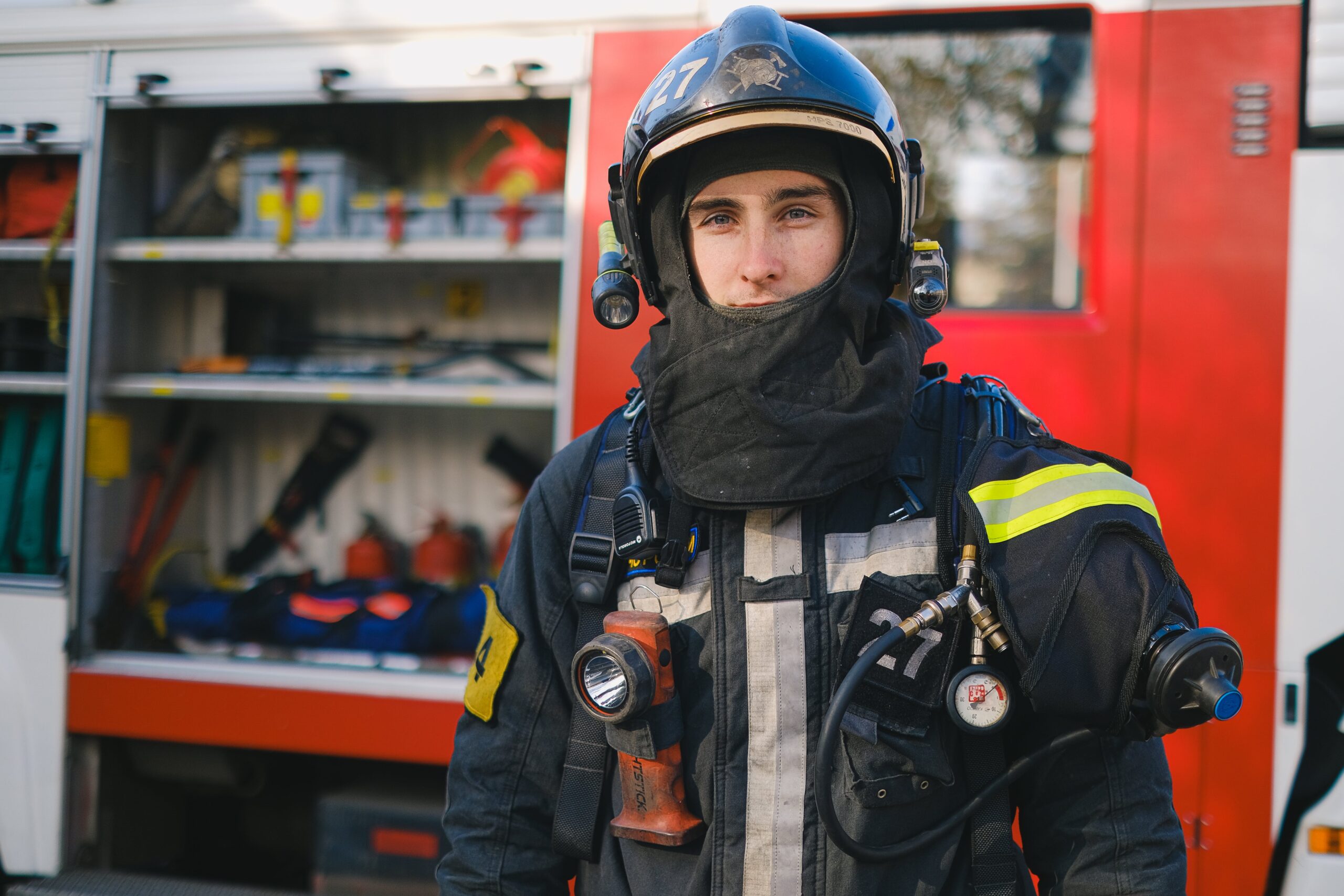
Tech Trends in Firefighting: 6 Tech Innovations Reshaping Fire Response Strategies
Are you concerned about the increasing challenges faced by firefighters in tackling blazes? In the ever-evolving landscape of firefighting, technology is becoming a crucial ally in enhancing response strategies.
Innovative tech solutions are reshaping how firefighters combat fires, from cutting-edge drones to advanced thermal imaging systems. By understanding and embracing these technologies, fire departments can optimize their resources and response times, ultimately saving lives and protecting communities more effectively.
In this blog, we’ll discover six tech innovations reshaping fire response strategies and the forefront of these advancements.
1. Enhanced Fire Detection Systems
These systems utilize a combination of advanced sensors, artificial intelligence, and data analytics. These swiftly identify potential fire hazards before they escalate into major emergencies. These systems can detect subtle changes indicative of a fire outbreak by continuously monitoring environmental conditions such as temperature, smoke, and humidity.
It allows firefighters to focus their efforts where they are most needed. Wireless connectivity enables seamless communication between detection devices and firefighting teams, facilitating swift coordination and response.
The UV-based fire detection system is another cutting-edge innovation that is attracting interest. Research shows this system is appropriate for small to medium-sized structures, residences, and automobiles since it provides precise and affordable detection. According to MDPI, using Fourier spectrum analysis and UV radiation detection reduces false alarms and produces high accuracies, outperforming current methods.
The device can be used in a variety of scenarios. It is due to its ease of use and ability to detect flames as far as fifty meters away. This technology greatly enhances property and personal safety by offering insightful information on creating effective detection systems.
Also, these systems are increasingly incorporating predictive modeling capabilities, forecasting potential fire outbreaks based on historical data and environmental factors. By anticipating the risks in advance, these systems empower firefighters to proactively deploy resources and mitigate potential damage.
Integrating these systems is paramount as wildfires and urban fires continue to pose significant threats. They aid in bolstering these response strategies and safeguarding communities.
2. Augmented Reality (AR) Fire Training Simulations
Augmented Reality (AR) fire training simulations represent a groundbreaking advancement in firefighter education and preparedness.
Fire training simulations using AR provide several advantages and improve training efficacy and efficiency in various disciplines, states Training Magazine. Increased interaction and engagement are fostered by AR, which improves learning effectiveness and results. Because of its immersive qualities, realistic simulations are made possible, which lowers the chance of mistakes and improves situational awareness.
AR promotes continuous improvement and continuing skill advancement by providing real-time feedback and direction. Because of its versatility, AR can be used for remote training, which does away with the need for travel and on-site sessions. It makes it a flexible and affordable option for training in various settings and sectors.
3. Drone Technology for Aerial Surveillance
Drone technology has emerged as a game-changer in firefighting, offering invaluable support through aerial surveillance capabilities. With high-resolution cameras and thermal imaging sensors, drones can provide real-time, bird’s-eye views of fire-affected areas. It allows firefighters to assess the extent of the blaze and strategize their response more effectively.
This aerial perspective enables rapid identification of hotspots, potential fire spread patterns, and areas of concern. It empowers firefighting teams to allocate resources efficiently and prioritize their efforts where they are most needed.
According to TorHoerman Law, firefighters face numerous hazards in the line of duty, including exposure to PFAS chemicals found in firefighting foams. These chemicals, known for their persistence and adverse health effects, pose serious risks to firefighter safety. Exposure to PFAS can lead to various health issues, including cancer, reproductive problems, and immune system disorders.
Given these risks, adopting drones for aerial surveillance can help minimize direct firefighter exposure to hazardous environments. It enhances overall safety during firefighting operations. To further this goal, communities across America have initiated the AFFF lawsuit seeking compensation for damages caused by exposure to PFAS-containing firefighting foams. These lawsuits seek to hold producers responsible for endangering public health.
As a result, they highlight the urgent need for safer firefighting practices. It also includes exploring alternative firefighting technologies to mitigate health and environmental risks.
Drone technology offers a promising solution by reducing reliance on traditional firefighting methods that involve extensive foam applications. It thereby decreases the release of harmful chemicals into the environment and potentially lowers the incidence of related legal actions.
4. Firefighting Robots and Autonomous Systems
These robotic devices assist firefighters in various tasks, ranging from extinguishing fires to conducting search-and-rescue operations in hazardous environments.
Equipped with cameras and manipulator arms, firefighting robots can navigate through smoke-filled buildings and rubble. It can also move through challenging areas where human access may be limited or too risky.
Given their ability to actively combat fires in methods that reduce the risk to human life, robots present a potential alternative for combating fires. According to WFCA, these vehicles travel dangerous terrain plus enter blazing structures because they are outfitted with fire retardants and heat-sensing cameras. Although firefighters presently operate most of the robots remotely, advances in artificial intelligence allow robots to make decisions about their tactics independently.
Robots may also carry items and remove people from hazardous situations while using thermal & infrared cameras to provide critical situational evaluations. The high price, however, continues to prevent broad use, which is why efforts to create more reasonably priced firefighting robot solutions are being made.
5. IoT-Enabled Firefighter Gear and Equipment
These advanced systems integrate Internet of Things (IoT) technology into traditional firefighting gear. These include helmets, suits, and breathing apparatus to provide enhanced safety and performance capabilities.
One key feature of IoT-enabled firefighter gear is real-time health monitoring. Sensors in the gear continuously monitor vital signs like heart rate, body temperature, and oxygen levels. It can alert both the firefighter and command center to any abnormalities or signs of distress. This proactive monitoring helps prevent injuries and heat-related illnesses, ensuring firefighters can operate at their best in challenging conditions.
IoT sensors can track the location and movements of firefighters within a fire scene. It enhances situational awareness for incident commanders and enables more effective coordination of rescue efforts.
6. Data Analytics and Predictive Modeling
Risk assessment is one of the primary applications of data analytics in firefighting. Predictive models can identify high-risk areas by analyzing factors such as weather conditions, geographical features, and past fire occurrences. Especially those that are prone to wildfires or urban fires. This information allows fire departments to allocate resources strategically, implement preventive measures, and educate communities about fire safety practices.
Data analytics enables more efficient resource allocation during firefighting operations. Incident commanders can make informed decisions about deploying personnel and equipment to the most needy areas by analyzing data streams from various sources. These sources include IoT sensors, drones, and satellite imagery. This optimized resource allocation enhances response effectiveness and minimizes the spread and impact of fires.
In conclusion, technological advancements are reshaping firefighting strategies, equipping firefighters with powerful tools to combat fires more effectively. By harnessing the power of technology, firefighters can better protect communities, minimize damage, and ensure safer environments for all. Continued investment in these technologies will be essential to stay ahead of the evolving challenges of fire response and prevention.



